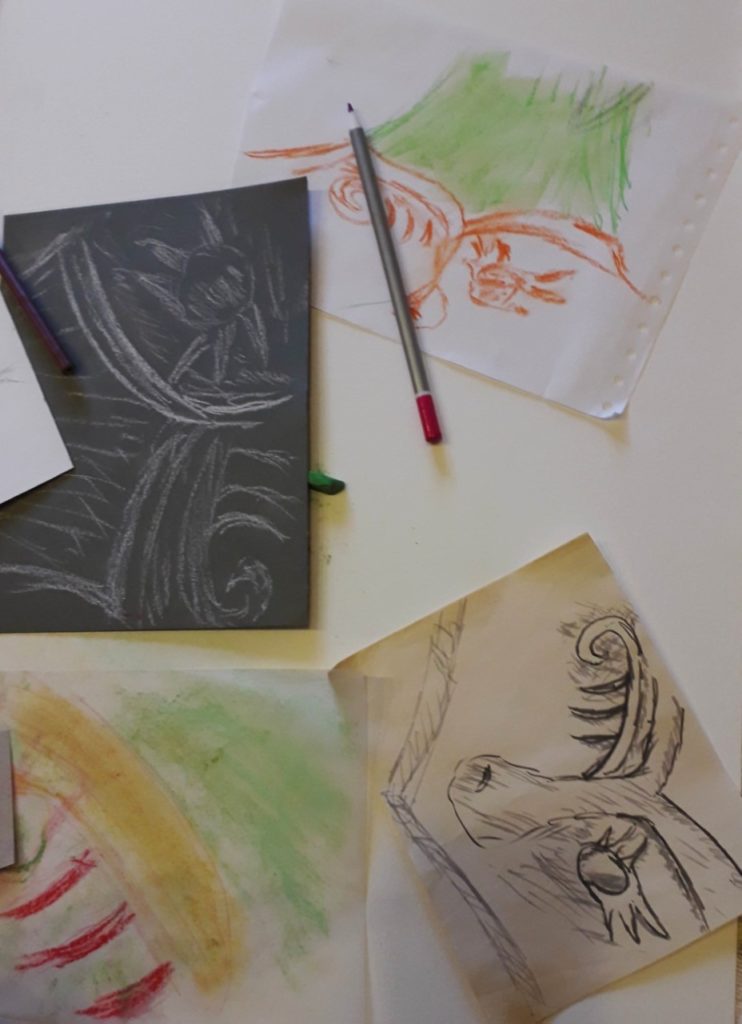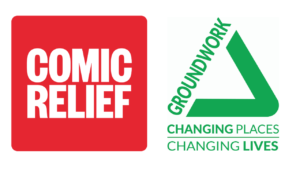We have been working with Arts and Minds since 2015, delivering sessions for their Arts on Prescription courses and providing spaces for the groups to meet in. Arts on Prescription is a series of weekly meetings, led by a counsellor and an artist, for people experiencing mental health challenges. In the museums, we usually speak to the group in the galleries, using our collections for inspiration.
A course had been planned for Spring 2020, but coronavirus closed the museums. Arts and Minds were keen to continue their service, and so our discussions led to how we could provide the museum sessions in a digital way.
When the previous courses have been delivered, participants have many opportunities to visit the galleries at the Museum of Archaeology and Anthropology, or artefacts from the handling collections are available for inspiration. People would also visit several galleries during a trip to the Fitzwilliam Museum. We felt that being in such a rich environment became central to the work the participants produced and the thinking and processes of previous courses. Not being able to be in the physical environment this time we wondered if showing a carefully chosen selection of pieces would create opportunities for dialogue between and around central themes or ideas. In fact, we quickly realised that listening into the conversations between museum educators might be interesting for the participants.

During our planning discussions we agreed that there are no replacements for the experience of physically being in the museum being surrounded by the objects. There is no comparison to being in a welcoming safe group with other voices and other opinions around you in the same way. We wanted to recreate as much of the original course as we could, keeping an environment that connected people with objects. But we had to work within the limitations of being one stage removed: neither the education team nor the participants could view the real artefacts. Everything was taking place through screens. There were elements of the physical experience that we wanted to keep: the welcome, observation, discussion and stimulation for further thought.
It would have been possible for us to deliver almost the same content as the original course, but we decided to explore new ways of connecting within and having conversations across the collections. We attempted to create something different yet familiar: a session that started from a robust examination of the objects but was designed with this group in mind. Something that offered an informal and friendly approach, with questions, exploration and sharing. We wanted to offer stimulation and introduce ideas or themes for future creative art and work, using the breadth of the collections of the Fitzwilliam Museum and the Museum of Archaeology and Anthropology.

We decided that a finished film of around 15 minutes was a good length for our contribution to the sessions: enough time to be rich in content but not too long for comfort. We chose between 4 and 6 objects across the two collections to discuss, some of these were old favourites, but we also took the opportunity to show artefacts not currently on display, or things that are less accessible to groups. Because these were bespoke sessions, we researched around the objects and liaised with curatorial and collections colleagues.
By chatting together, we soon came up with the storyline and order for the sessions: one on identity and another on comfort food. A simple slideshow was put together, and we recorded the conversation we had over Zoom. This was simple and easy to use, once we had remembered to leave a space on the presentation for our faces to show on screen! We felt it important to keep the focus on the objects, but with the friendly, personal touch of the educators. We both genuinely felt like we were being treated to some new investigations ourselves, which we think comes across in the finished films.

Feedback from the course organisers was positive:
“I love both of the films and I think against all odds you have managed through your animated presentation and stories to being the museum to life through the films. I have really loved planning my workshop around them. I agree it is no replacement for the live interaction with the groups and I am certainly missing these connections and dynamics.”
“Could have listened to you for hours. Just fascinating and beautifully executed.”
“Thank you so much for a delightful video… I love the stories you present through the objects and the idea of both work and conviviality… I think our participants will find inspiration and nourishment in this video. It is so very topical. So many workshops can be designed around this video. You got us to travel round the world, we discovered a little more through objects about people’s life in different countries, at different time. “
We will be using the films with other groups, but we are really looking forward to the museums opening up again when we can again introduce people and objects.











